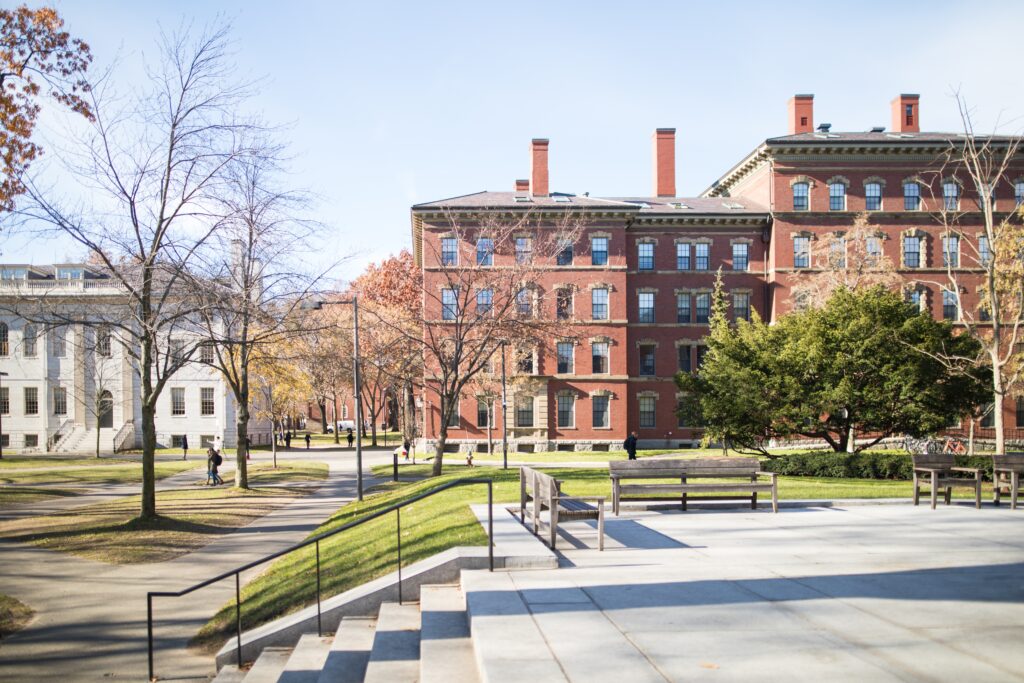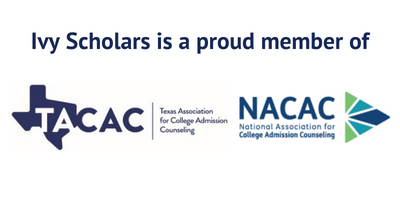Harvard is an incredibly popular, and competitive, college. Everyone knows this on some level, but it is still impressive to realize just how selective they are as an institution. That said, Harvard is not a monolith, and not all departments and programs within Harvard are equally competitive. Now, Harvard does not technically admit by major; there are colleges who do, especially for their most popular majors, but others don’t. That said, your choice of major and subjects areas of interest do matter to Harvard. They want some Computer Science students, sure, but they don’t want an entire class who only wants to study CS, or Economics, or Politics. In this article then, we’re going to look at what the most, and least, popular majors at Harvard are, and how this information should impact your application strategy. Let’s jump right in!
Data on Harvard’s Majors
There are two things we should note, before we continue. First, Harvard refers to these as “concentrations” rather than majors. They work the same as majors at any other school, Harvard just has their own name for them. For the sake of this, we will be referring to them as concentrations from here on. Second, all of our data comes from Harvard itself, and you may find it here. Their Fields of Concentration Handbook both describes each concentration and its requirements, and lists how many students were enrolled in each. The most recent data available is from the 2024-25 academic year.
To start off with, here’s a chart of all of Harvard’s concentrations, along with the number of students at Harvard enrolled in each in 2024-25:
| Concentration | Number of Students |
| African and African American Studies | 9 |
| Anthropology | 30 |
| Applied Mathematics | 391 |
| Art, Film, and Visual Studies | 54 |
| Astrophysics | 19 |
| Biomedical Engineering | 45 |
| Chemical and Physical Biology | 41 |
| Chemistry | 83 |
| Chemistry and Physics | 19 |
| Classics | 29 |
| Comparative Literature | 15 |
| Computer Science | 510 |
| Earth and Planetary Sciences | 12 |
| East Asian Studies | 27 |
| Economics | 934 |
| Electrical Engineering | 42 |
| Engineering Sciences | 105 |
| English | 109 |
| Environmental Science and Engineering | 11 |
| Environmental Science and Public Policy | 68 |
| Folklore and Mythology | 6 |
| Germanic Languages and Literatures | 6 |
| Government | 527 |
| History | 137 |
| History & Literature | 83 |
| History and Science | 122 |
| History of Art and Architecture | 46 |
| Human Development and Regenerative Biology | 125 |
| Human Biology, Behavior, and Evolution | 62 |
| Integrative Biology | 142 |
| Linguistics | 19 |
| Mathematics | 163 |
| Mechanical Engineering | 97 |
| Molecular and Cellular Biology | 127 |
| Music | 36 |
| Near Eastern Languages and Civilizations | 11 |
| Neuroscience | 336 |
| Philosophy | 92 |
| Physics | 102 |
| Psychology | 303 |
| Comparative Study of Religion | 6 |
| Romance Languages and Literatures | 12 |
| Slavic Languages and Literatures | 12 |
| Social Studies | 216 |
| Sociology | 126 |
| South Asian Studies | 4 |
| Special Concentrations | 10 |
| Statistics | 193 |
| Theatre, Dance & Media | 26 |
| Studies of Women, Gender, and Sexuality | 13 |
So that’s a bunch of numbers, and this does not include students who have multiple concentrations, as Harvard tracks those separately. This does, however, give a good sense of proportion, and how popular certain concentrations are relative to each other. Note that Special Concentrations refers to students who design their own concentration and program of study; this is a rare option, but intended for students who want to explore something particularly interdisciplinary.
Now that we have this information, we’re going to look at what concentrations are most and least popular, and what broader implications this has.
Harvard’s Most Popular Concentrations
We’ll begin by looking at which concentrations at Harvard are most popular with their students. While these are all on the table above, that’s not the easiest to read, so here are the top 5 most popular concentrations at Harvard in 2024-25:
- Economics, with 934 students
- Government, with 527 students
- Computer Science, with 510 students
- Applied Mathematics, with 391 students
- Neuroscience, with 336 students
This is, overall, a not terribly surprising list. The fields of study on this list are some of the most popular at many universities. We will note that Government is higher on this list than at many schools, but the number of students who use this as a prelude to a law degree or an entrance into a career in politics is likely quite high at a school like Harvard.
Neuroscience is the least popular of the popular concentrations, but we will note that Harvard offers four other biology-related concentrations (plus biomedical engineering). Biology and neuroscience are often incredibly popular due to demand from premeds (even though pre meds do not have to major in bio, many do), but by splitting these programs up, Harvard is able to better serve this demand, along with that of students interested in biology for other reasons.
If you are interested in pursuing one of these concentrations, then you are likely to face very stiff competition. This comes for two reasons; first, because even if Harvard enrolls a lot of Economics or Government students, they don’t want just that. Second, the things that prepare you for one of these fields are often highly duplicated.
Thus, many students who apply to Harvard to major in Computer Science look quite similar. They have undertaken coding projects, or participated in coding clubs at their high schools, and have very strong academic groundings. Thus, the challenge for these students stands entirely in differentiating themselves from a very crowded field. While this is true for every student who applies to Harvard, when they get thousands of applicants from students who have done coding challenges or written an app, you need something to help you stand out.
A final note is that while Harvard does offer engineering courses, it is far from their most popular set of concentrations. Thus, students interested in STEM may find an easier time applying to engineering concentrations at Harvard than CS or Applied Math.
Harvard’s Least Popular Concentrations
The most popular concentrations are not terribly surprising, but the least popular may raise a few eyebrows. While there are many fields of study noted as being less popular (such as Art History), many of these are not on this list; these are not the most popular majors, sure, but the least are often ones you’ve never heard of at all. Again, the full table is a bit much, so here are the five least popular concentrations at Harvard, for the 2024-25 academic year:
- South Asian Studies, with 4 students
- Comparative Study of Religion, with 6 students
- Folklore and Mythology, with 6 students
- Germanic Languages and Literature, with 6 students
- African and African American Studies, with 9 students
The most amusing of these is comparative study of religion being so low, as one of Harvard’s main functions at the time of its founding was the training of new ministers. This, and the rest, fall within the Humanities, but this is not to say all humanities programs are undersubscribed; History and English both have over a hundred students in them.
So what makes a concentration particularly undersubscribed? There are many factors of course, but we have a few that we think are key:
- Lack of knowledge. We had heard of the Folklore and Mythology program before, but we’re nerds who spend all our time researching colleges; most students have never heard of it, and do not even consider it as an option.
- Lack of interest. Many students may want to pick up German as a language, but not devote their full course of study to it.
- Concern over future prospects. Many students attend college with an eye towards future careers, and believe that certain majors will better prepare them for a desired career than others.
We do recommend investigating any college you apply to carefully, as some of these undersubscribed areas of study may be exactly what you’re looking for. At Harvard, for example, Earth Sciences is one of the least popular concentrations, but is a field of sciences that can prepare for any number of good careers.
Applying for one of the less subscribed concentrations won’t necessarily increase your odds of admission, but it can make your application stand out more, especially if you have undertaken work in high school which positions you as interested in that major. Many students have taken part in coding challenges; fewer have undertaken a folklore ethnography in their home town.
We don’t want to encourage you to apply cynically, to only aim for concentrations with the least competition, but this can be a good way to help your application stand out in a very crowded field.
Finally, while the least subscribed programs vary a good bit from college to college, there are a few that are almost always there, namely area studies (that is, studying a particular region of the globe) and language studies. Language studies are particularly useful, as most colleges have a foreign language requirement and employ significant numbers of language faculty, then receive less interest in students wanting to do a deep study of these languages.
These can be good fields, especially in combination with other majors, for students interested in international business or public service. Studying Russian, for example, may be a good way to get your foot in the door at any number of government agencies. This isn’t the only reason to study one of these subjects, but is worth keeping in mind.
Final Thoughts
Harvard is an excellent and competitive university, regardless of which concentration you choose to pursue. That said, not all concentrations are the same, and should not be treated as such. Some are going to be more competitive, simply due to how popular they are, even if Harvard does not directly admit by concentration. We hope this article has given you a sense of the relative popularity of concentrations at Harvard, and how this impacts admissions.
This is the case of most top universities, and one of the reasons we help our students do their research on schools when choosing what major is right for them. This is all part of crafting an application strategy, using your background and talents to help you have the best chance of admission to a top program. If you have questions about your own college applications, or want help figuring out which majors are the best fit for you, then schedule a free consultation with us today. We have a long experience helping students get into some of the best schools in the country, and are always happy to hear from you.








